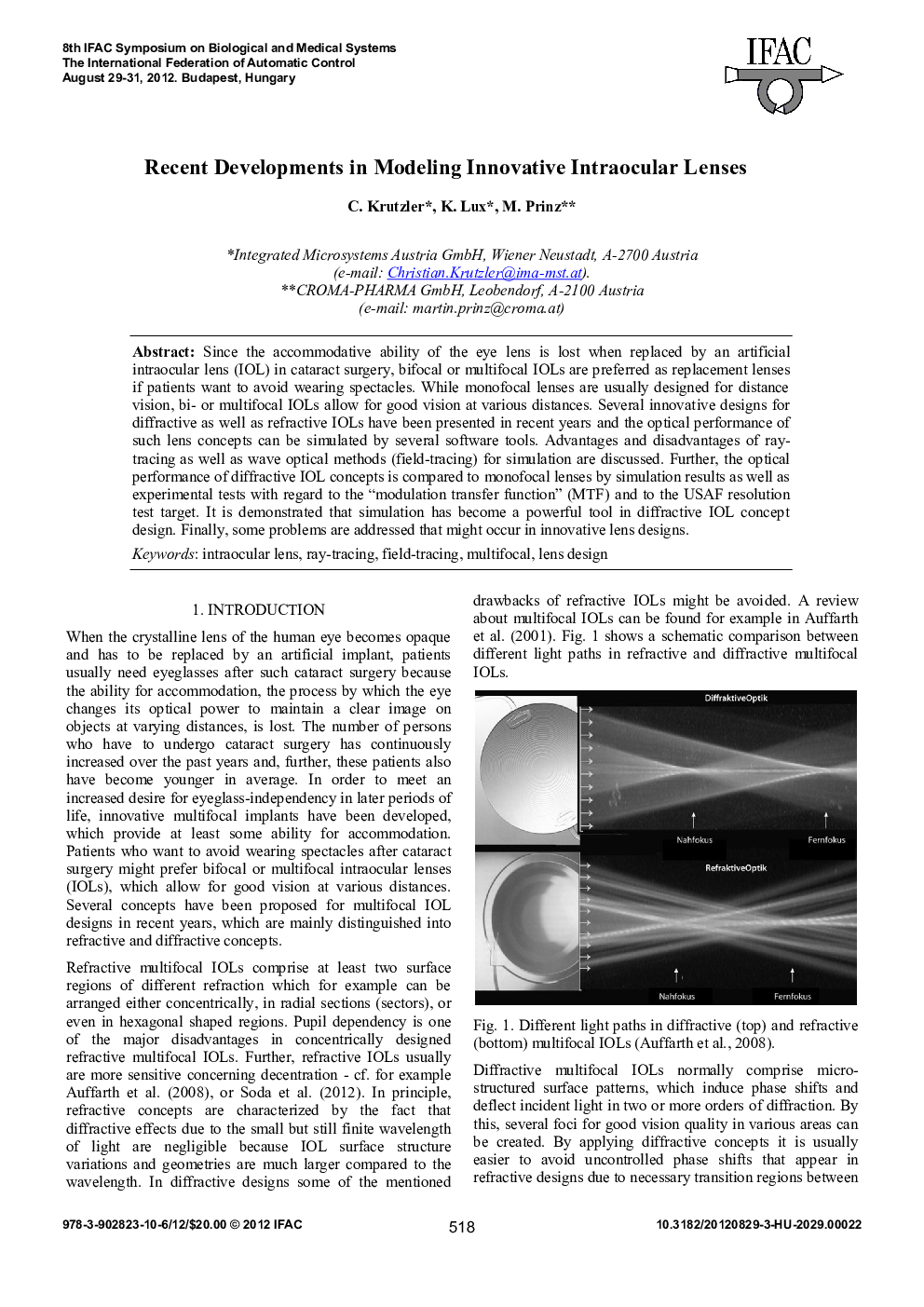| Article ID | Journal | Published Year | Pages | File Type |
|---|---|---|---|---|
| 718324 | IFAC Proceedings Volumes | 2012 | 5 Pages |
Since the accommodative ability of the eye lens is lost when replaced by an artificial intraocular lens (IOL) in cataract surgery, bifocal or multifocal IOLs are preferred as replacement lenses if patients want to avoid wearing spectacles. While monofocal lenses are usually designed for distance vision, bi- or multifocal IOLs allow for good vision at various distances. Several innovative designs for diffractive as well as refractive IOLs have been presented in recent years and the optical performance of such lens concepts can be simulated by several software tools. Advantages and disadvantages of ray-tracing as well as wave optical methods (field-tracing) for simulation are discussed. Further, the optical performance of diffractive IOL concepts is compared to monofocal lenses by simulation results as well as experimental tests with regard to the “modulation transfer function” (MTF) and to the USAF resolution test target. It is demonstrated that simulation has become a powerful tool in diffractive IOL concept design. Finally, some problems are addressed that might occur in innovative lens designs.
